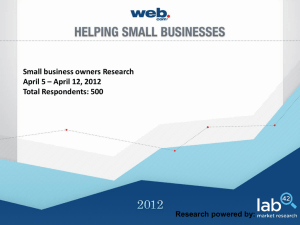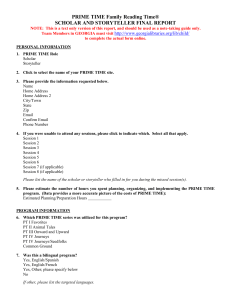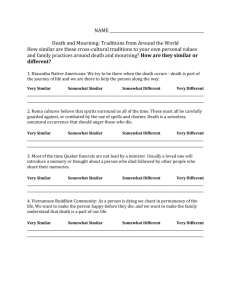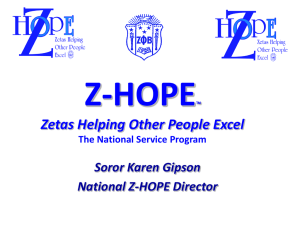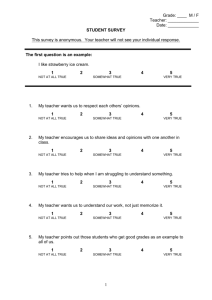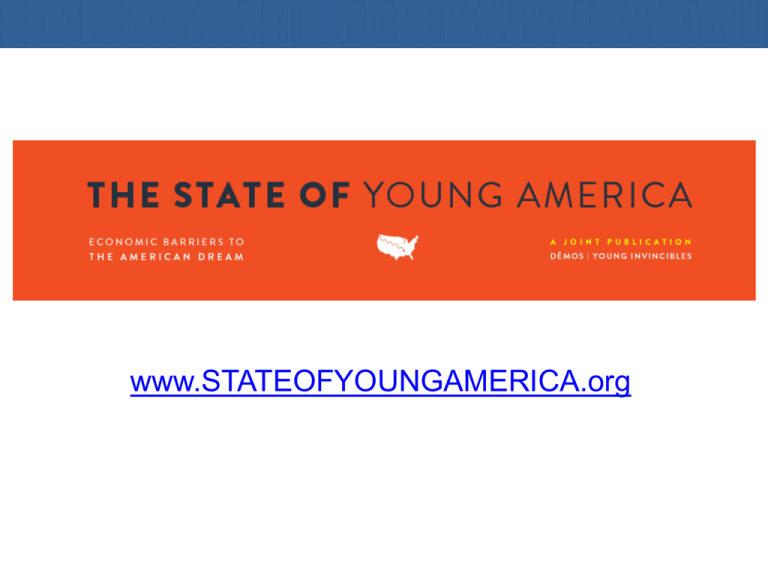
www.STATEOFYOUNGAMERICA.org
THE REPORTS
• DATABOOK
• Analysis of data trends over 30 years to compare the economic
position of today’s young workers with that of a generation ago
• Evaluates the ability of young workers to build strong middle class
households now and in the future
• POLL
• Firsthand look at how young Americans feel about their economic
situation, their prospects for the future, and their aspirations of working
hard and getting ahead. Conducted by Lake Research Partners and
Bellwether Research and Consulting.
• STORIES(not covered in this presentation)
• Stories of young people entering adulthood in a time of uncertainty, as
relayed to Young Invincibles by the young people themselves.
KEY AREAS EXPLORED
• Jobs And The Economy
• Raising A Family
• Cost Of Living
• Higher Education
• Health Care And Coverage
DEMOGRAPHIC FOCUS
• Report covers young people ages 18 to 34 today; mostly
Millennials, but a few Gen-Xers.
• Compares Millennnials to their parents, the Baby
Boomers, who were similarly-aged (15 to 34) in 1980
CONTEXT
• major economic and political shift in last 30 years
• globalization and technology have been important, but our
nation’s response to these forces is more important
• public policy either failed to address new challenges, or
made things worse
JOBS AND INCOME
KEY FINDINGS:
• Only young workers with at least a bachelor’s degree,
either male or female, saw earnings increase over the
last generation
• Median earnings for young African-Americans are 75% of
the earnings of whites; 68% for Latinos
• Young women earn less than men at every level of
education.
• 29% of 18-24 year olds and 16% of 25-34 year-olds are
underemployed
• The percentage of young adults with jobs is at its
lowest point in a generation
Women Make Some Gains, Men’s Earnings Fall
Earnings for Bachelor’s Degree-Holders Rose…
…But Fell For All Other Education Levels
Gender Pay Gap Narrows, but Still Exists
Earning by Race/Ethnicity Still Show Wide Disparities
Unemployment Rate by Age, Sex, and Race/Ethnicity, 2010
• Unemployment rates are higher for young Americans
• 17.3% for 18-24 year-olds, 10.1% for 25-34, and 7.6% for 35+
• Young men have higher unemployment rates than young
women
• 19.7% for young men ages 18-24; 14.6% for women.
• Unemployment rates are higher for young people of color
of either sex
• 17.6% for African Americans ages 25-34, versus 11.3% for Latinos
and 8.9% for whites.
• Young African American men have the highest rates
• 32.6% for African Americans men ages 18-24; 19.3% for 25-34
Overall Employment Levels for Young People
at Historic Lows
RAISING A FAMILY
KEY FINDINGS
• Young people are getting married and starting families
later.
• The labor force participation of mothers rose 25% since
1980.
• Just 11% of all workers had access to paid family leave
benefits.
• Center-based child care fees for two children exceeded
annual median rent payments.
Young People Waiting Longer to Marry, Have Children
A Higher Share of Mothers in the Workforce
Few Workers Have Access to Paid Family Leave
Child Care Arrangements of Working Mothers
• The share of children with no regular child care
arrangement (“other”) has grown dramatically.
• Decrease in access to center-based care for below-poverty
families
• 12% of such families use center-based care today, down from 21%
in 1988.
• Differences by Race/Ethnicity
• African Americans use center-based care at about the same rates as
whites, but use other paid care (nannies, etc.) less and relative care
more.
• Hispanics use paid care of all forms much less than either African
Americans or whites, and rely on relative care much more,
particularly grandparent and other relative care.
HOUSING
KEY FINDINGS
• 41.3% of 25-34 year-old households spend more than
30% of their income on rent.
• The share of housing-burdened young households
(25-34) rose from 28% in 1980 to 41% in 2009.
• The share of young adults living with their parents
increased rapidly over the past decade.
• Levels of credit card debt among those ages 25 to 34
rose 81% since 1989, to an average of $6,255 in 2007.
Rent’s Share of Income Has Ballooned Since Housing Bubble
As Rent Rose, So Did The Share of Housing-Burdened Young Adults
More Young Adults of All Ages Still Live With Their Parents
HIGHER EDUCATION
KEY FINDINGS:
• Educational attainment of young people of all
ethnicities/races has increased over the past generation.
• Young women are significantly more educated than they
were a generation earlier, and have surpassed young
men, whose educational attainment has stagnated.
• Average public school tuition is nearly three times higher
today than in 1980
• Two out of three students graduate with student loan debt,
at an average of over $24,000
• The student loan default rate rose 31% over just 2 years.
Post-High College Enrollment Grows, But Gaps By Income Remain
7 out of 10 high school graduates enroll in college, but in
2009 the gap in enrollment between low- and high-income
households was 29%.
Racial/Ethnic Disparities in Completion Rates Remain Stark…
…Leading to Continued Gaps in Educational Attainment
Women, however, have made huge gains
• Overall, the percentage of young people with college
degrees has risen
• 24% of 25-34 year-olds had Bachelor’s Degrees in 1980; now, 33%
do.
• Educational attainment of men has stagnated, while
women have soared
• Percentage of women ages 25-34 with bachelor’s degrees+ has risen from
21% to 37% in the past 30 years, while young men’s has remained flat.
• Attainment for all races/ethnicities has risen, but African
Americans and Latinos still trail
• Percent of 25-34 year olds with bachelor’s degrees+ in 2011: Latinos – 14%,
African Americans – 21%, whites – 40%.
Tuition and Fees at Public Schools Has Nearly Tripled
Public Four-Year vs. Public Two-Year
Pell Grants Cover a Rapidly Shrinking Share of Costs
Maximum Pell Grant as a Percentage of
College Costs
Student aid has not kept up with tuition increases. In 1980 the maximum Pell
Grant covered 69% of the cost of attendance, today it covers 34%.
Student Loan Debt a Heavy Burden For All, Particularly Minorities
Undergraduate Student Loan Debt by Race, 2008
Two-thirds of students graduate with student loan debt, at an average of $24,842.
African Americans are more likely to borrow, and to graduate with more debt.
Student Loan Defaults Rose During Great Recession, Particularly For-Profit
HEALTH CARE
KEY FINDINGS:
• In just 10 years, employer-sponsored insurance dropped
12.8% for workers 18-24 and 8.5% for workers 25-34.
• During the recession, uninsurance rose among both 18-
24 and 25-34 year-olds.
• Young people of color are disproportionately likely to lack
insurance.
• The ACA has begun to reverse that trend
• 1 million young people under the age of 26 joined their parent's
plan in the last quarter of 2010 and the first two quarters of 2011.
• Uninsurance rates for young people dropped in 2010, halting a
decades-long increase.
Young Latinos Disproportionately Lack Health Insurance
Young People Turn to Credit Cards to Pay Medical Bills
Uninsurance Rates Have Risen Dramatically Over Past Decade
Coverage Has Risen Since Passage of ACA
• While uninsurance rates climbed during the recession,
more recent numbers show the benefits of the Affordable
Care Act (ACA) to young people.
• 18-24 year olds saw a 2% drop in uninsurance in 2010,
largely due to the ACA provision allowing them to remain
on their parents’ plans.
• That is one million additional insured, thanks to the ACA
VISIT
STATEOFYOUNGAMERICA.ORG
FOR MORE INFO
Young Invincibles/ Dēmos
Findings from a Nationwide Survey of 872
Respondents Age 18-34
Celinda Lake and Joshua Ulibarri
Lake Research Partners
Washington, DC | Berkeley, CA | New York, NY
LakeResearch.com
202.776.9066
Christine Matthews
Bellwether Research & Consulting
Alexandria, VA
Bellwether-research.com
703.650.5203
Key Takeaways
•
Juggling Hope in Tough Times. Members of the Millennial generation remain
optimistic about their future and the future of their generation when it comes to
achieving the American Dream. However, at the same time they feel economic
anxiety and that things have gotten harder over the last four years. A plurality
feels their generation may be worse off than their parents.
•
A Tough Start with a Long Road Ahead. Young people demonstrate that they
have had a tough start to adulthood. A majority of young Americans perceive
their personal finances as just fair or poor. Furthermore, being decades away
from retirement, a significant share is already experiencing intense worry about
being unable to save enough for their retirement.
•
An ambitious agenda for Elected leaders. As a result of the above - they believe
that our elected leaders should focus on creating jobs and growing the economy,
making college and more training affordable, and ensuring that Social Security is
available for their generation.
43
A majority of young Americans rate their personal financial situation as
just fair or poor. Just 1 in 16 perceive their financial situation as
excellent. There is not a great deal of intensity in any particular direction,
with most deciding between just fair or poor.
Personal financial situation
48
-4
7
Excellent/ good
52
15
1
Just fair/ poor
Don't know
Darker colors used to indicate greater intensity.
How would you rate your personal current financial situation - excellent, good, just fair, or poor?
44
Just 1 in 3 young Americans earn more than $30,000 per year.
African-Americans and Latinos earn less than their young white
counterparts, especially white men. Education, unsurprisingly, is a
big part of earning potential.
Most likely to earn less than $30K:
•Age 18-24 – 76%
•High school or less – 74%
•African-Americans – 69%
•Latinos – 67%
•Independents – 63%
Personal income
Most likely to earn more than $30K:
•College graduate or post-grad – 58%
•Republican men – 46%
•Age 25-34 – 44%
•Strong Republican – 44%
•White men – 43%
56
32
12
Below $30K
Above $30K
Don't know/ refused
In which of the following ranges did your personal income fall last year, before taxes?
[IF REFUSED OR Don’t know] Could you tell me if your annual personal income is below or above 30 thousand dollars?
45
Despite mixed emotions on their personal economic situation,
most young Americans say that their earnings have increased over
the past four years. However, 1 in 6 say that they have decreased
in that time period.
Earnings in the past four years
53
30
16
1
Increased
Decreased
Stayed the same
Asked only of those respondents who said they were employed either full- or part-time.
[IF EMPLOYED]: In the last four years have your earnings increased, decreased or stayed the same?
Don't know
46
Regardless of the increased income, for many, especially minorities, it
has become harder to make ends meet over the past four years, with
more than 1 in 4 saying it has become much harder.
Making ends meet now versus four years ago
68
-48
20
5
Much/ somewhat
easier
27
Much/ somewhat
harder
Most likely to say it has become much
harder to make ends meet:
•Unemployed – 42%
•African-American women – 36%
•Latino men – 34%
•African-Americans – 33%
•Latinos – 32%
10
No different
Darker colors used to indicate greater intensity.
Thinking about the last four years and your ability to make ends meet and pay your bills, would you say it has become much
harder, somewhat harder, somewhat easier, or much easier to make ends meet??
1
Don't know
47
Even as half say their personal earnings have increased in the
last four years, four in ten say they have fallen into greater
debt within the past four years.
Increase in personal debt in the past 4 years
60
39
1
Yes
Not really
Don't know
48
Has your personal debt increased in the last four years, or not really?
Almost 3 in 10 do not have health insurance. The unemployed, those
employed part-time, those with a diverse ethnic background, and young
males are most likely to live without coverage.
Most likely have health
insurance:
•Republicans age 18-24 – 86%
•College-educated women – 86%
•Income $30K and more – 86%
•Republican women – 82%
•4-year college graduates – 81%
Health insurance coverage
Most likely not to have health insurance:
•Unemployed – 46%
•Employed part-time – 38%
•African-Americans age 18-24 – 37%
•Latinos – 36%
•Men age 18-24 – 35%
71
27
2
Have insurance/ covered by a No insurance/ not covered by
plan
a plan
Don't know
49
Right now, are you personally covered by any form of health insurance or health plan, or do you not have
insurance at this time?
Most with health insurance have it through their
place of work or their parents’ plan.
Health insurance coverage
41
You're covered under your work insurance
18
You're covered under your parents' plan
You're covered under your spouse or partner's
plan where they work
14
You have government health insurance such as
Medicaid
14
7
You buy your own insurance
You have a plan through school
Other
4
2
50
[IF INSURANCE]: Which of the following best describes your health insurance coverage:
Healthcare affordability is the key issue for those
without health insurance. Just 1 in 6 of the
uninsured choose not to have health insurance.
Reasons for no health insurance
52
Cannot afford health insurance
17
You choose not to have health insurance
Employer does not offer health insurance as a
benefit
Insurance companies refuse to insure you
15
4
9
Something else/ other
Don't know
3
51
[IF INSURANCE]: Which of the following best describes your health insurance coverage:
Because of the current economy, almost 1 in 2 young
Americans have delayed their plans to purchase a home.
Many have also paused on entrepreneurship and education.
Delaying things because of the economy
Yes, delayed
Purchasing a home
Don’t
know
No
53
-46
1
Starting a business
-38
59
3
Starting or continuing college or other training
-38
61
1
Moving out from family and living on your own
Starting a family
Getting married
-33
-30
-25
Here are some things other people in your generation have said they have delayed because of the current economy.
Please tell me if you have delayed that decision because of the economy and its impact on you.
67
0
68
2
73
2
52
Regardless of the current economic environment, a majority still believes
that everyone has an equal shot at being financially secure if they work
hard and play by the rules. Hard work, along with education, are key
components of achieving the American Dream.
Economic opportunity in America
51
39
8
Equal shot
Stay in the group you
were born
Depends
2
Don't know
Asked of one half of the total sample.
Here are two different statements about economic opportunity in America. Tell me which one is closer to your opinion even if
neither is perfect:
In America, everyone has an equal shot at being financially secure if they work hard and play by the rules
In America, if you are born into one economic group you are likely to stay in that group because the rules favor a few
53
Even in this economy, most believe that the American Dream
is still achievable. However, more are optimistic about their
own chances than are about the rest of their generation.
The American Dream
For most people in your generation
For you personally
77
69
26
19
4
Still
Unachievable Don't know
achievable
4
Still
Unachievable Don't know
achievable
*In a recent nationwide survey conducted by Lake Research Partners among all American adults, 70% said that the American
Dream is still alive, but just 68% said that they have already achieved it or will achieve it themselves. The wordings of the
questions was similar, but not exact.
When it comes to most people in your generation, do you think the American Dream is still achievable or do you think it has
become too hard to obtain and is unachievable for most people in your generation?
And how about for you personally, do you think the American Dream is achievable or do you think it is too hard to obtain
and is unachievable for you personally?
54
A majority is concerned that the middle class may be
disappearing. More than 1 in 3 say they are worried a great
deal, while just 11 percent say they are not worried at all.
Concern about the middle class disappearing
57
+16
41
35
A great deal/ a lot
10
11
2
Not at all/ a little/ some
Don't know
Darker colors used to indicate greater intensity.
How much does it concern you that the middle class may be disappearing - a great deal, a lot, some, a little, or not at all?
55
The economy and jobs are not the only issue the youth
wants Congress to focus on. Education, health care, and
Social Security are also top priorities for many.
Priorities for Congress
Less of a priority The top/ a priority
Net
Don’t
know
+82
1
Creating jobs and growing the
economy
-9 -2
Making a college education more
affordable
-14 -4
68
84
+70
1
Protecting health care services and
access for low-income people
-17 -4
65
82
+65
1
Making sure Social Security is
available for people in my generation
-17 -5
65
81
+64
2
Making post-high school education
and training more affordable
-15 -3
63
84
+69
1
81
Asked of one half of the total sample.
Here are some issues other people have raised as priorities for Congress. For each one, please tell me if you think that
should be the TOP priority, a priority but not the top, somewhat of a priority, or a low priority.
[PROBE]: Should that be the TOP priority, a priority but not the top, somewhat of a priority, or a low priority.
91
56
As the top remedies for the struggling economy, young Americans are
most likely to support making education more affordable and investing in
training for unemployed people.
Ways to make the economy stronger
Support
Oppose
Increasing financial aid and making
loans more affordable for college
and post-high school education -11
and training
Investing in programs that provide
new skills training for unemployed
people
Net
Don’t
know
-4
62
88
+77
1
-9 -4
60
89
+80
2
+72
2
Investing tax dollars in
infrastructure jobs like fixing roads, -13
bridges, and schools
-4
55
Asked of one half of the total sample.
Here are some things other people have said can help make the economy stronger. For each one please tell me whether
you strongly support, somewhat support, somewhat oppose, or strongly oppose each action.
[PROBE]: Do you strongly support, somewhat support, somewhat oppose, or strongly oppose
85
57
A plurality of young Americans identify with the Democratic
Party, almost 1 in 4 are closer to the GOP, while 1 in 5 say
they are independent.
Party Identification
40
+17
18
23
8
Democrat
Independent
Republican
Other
Generally speaking, do you think of yourself as a Republican, a Democrat, an independent, or something else?
[IF REPUBLICAN OR DEMOCRAT:] Do you consider yourself a strong (Republican/Democrat) or a not-so-strong
(Republican/Democrat)?
[IF INDEPENDENT:] Would you say that you lean more toward the Republicans or more toward the Democrats?
11
Don't know
58
4 in 5 young Americans say it is at least somewhat likely that
they are going to vote in the 2012 election. However, only
61% are very likely to vote in next year’s election.
Likelihood to vote in the 2012 election
81
61
+63
18
9
Very/ somewhat likely
Not very/ not at all likely
Darker colors used to indicate greater intensity.
What is the likelihood that you will vote in next year’s election for President, Congress, and other offices – are you very
likely, somewhat likely, not very likely, or not likely at all to vote?
2
Don't know
59
Overall, Republicans and Democrats are equally likely to say they are
going to vote next year. The difference, however, is in intensity with
Republicans 10 percentage points more intense in their likelihood to
vote.
Likelihood to vote in 2012 by party identification
Independents
Democrats
86
76
+73
+54
66
55
13
5
Very/
somewhat
likely
89
Republicans
Not very/
not at all
likely
1
Don't know
76
22
11
Very/
somewhat
likely
+80
Not very/
not at all
likely
9
5
2
Don't know
Darker colors used to indicate greater intensity.
What is the likelihood that you will vote in next year’s election for President, Congress, and other offices – are you very
likely, somewhat likely, not very likely, or not likely at all to vote?
Very/
somewhat
likely
Not very/
not at all
likely
2
Don't know
60
Methodology
• Lake Research Partners and Bellwether Research & Consulting
designed and administered this survey that was conducted by
telephone using professional interviewers from September 25 to
October 4, 2011. This nationwide survey reached a total of 872 adults
age 18 to 34.
• The sample included 472 young adults reached on landlines and 400
young adults reached on cellphones. The two samples were weighted
together so that cell dominant people (no landline or exclusively cell)
account for 51% of the completed interviews.
• The margin of error for the whole sample is +/-3.32 percentage
points. The sampling error for sub-groups is greater.
61
Washington, DC | Berkeley, CA | New York, NY
LakeResearch.com
202.776.9066
Celinda Lake
clake@lakeresearch.com
Joshua Ulibarri
julibarri@lakeresearch.com
Alexandria, VA
Bellwether-research.com
703.650.5203
Christine Matthews
cmatthews@bellwether-research.com
VISIT
STATEOFYOUNGAMERICA.ORG
FOR MORE INFO

